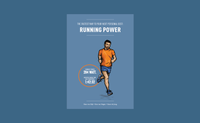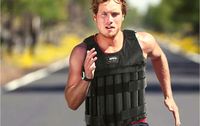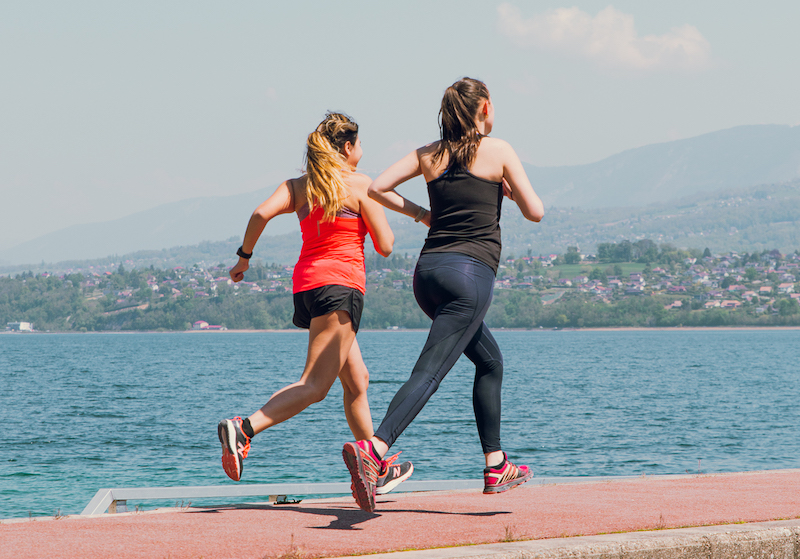Explore web search results related to this domain and discover relevant information.
Answer to: A boy of mass 50 kg runs up a set of stairs of total height of 3.0 m. Find the work done against gravity. By signing up, you'll get...
How much work is done by a boy of mass 70 kg who ran up a flight of 31 steps each 15 m high? Take g=10 m/s^2. A boy who can generate 500 w runs up a flight of stairs in 5.0 s.A 70 kg hiker climbs to the top of a 4200 m high mountain. The climb is made in 4.0 h starting at an elevation of 3200 m. Calculate the work done against gravity. A 50kg boy runs up the steps to the third floor, of height 10.5m, in 45s. While at the third floor, the boy drops a 0.25kg ball and strikes the ground.A boy is pushing his sled up a snowy slope. The sled has a mass of 20.4 kg and weighs 200 N. The boy pushes with a constant force of 75 N. The sled travels a distance of 10 m and gains 3 m in height. A girl runs up a stairway that is 6 m high with a 500 g book.An object of mass m=2 kg travels up an incline to a vertical height of 3 m. What is the work done on the object by gravity? Calculate the work done in lifting a 300 N weight to a height of 10 m with an acceleration 0.5 m/s^2. A child runs at 4.0 m/s and jumps onto a sled, initially at rest.
A calculator that estimates how losing weight can help runners run faster
Plan your training more effectively with out weight/pace calculatorIt's true that losing any non-functional weight can help improve your performance. And conversely, adding non-functional weight can see times slow as a result. However, losing weight when it's unnecessary can actual have a negative effect on your running performance.This calculator works on the simplistic idea that, all other things being equal, changes in weight will cause changes in your VO2 Max, and therefore performance. Coach Jack Daniels suggests that such a calculation can be useful for those returning to running after a break who may have gained weight due to decreased activity.Simplifying, it is a number that indicates the maximum amount of oxygen your muscles can make use of during exercise. If you have a higher VO2 Max then you can make better use of oxygen, so your muscles will work more effectively, so you'll be able to run more quickly.


33–35 calories may not seem like ... 10-mile run, this may equal burning 330–350 more calories than walking the same distance. A report by Harvard University compared the calories burned over 30 minutes by people at three different weights and found similar results. Specifically, they discovered that a 155-pound (70-kg) person could ...
33–35 calories may not seem like a huge difference at first, but over a 10-mile run, this may equal burning 330–350 more calories than walking the same distance. A report by Harvard University compared the calories burned over 30 minutes by people at three different weights and found similar results. Specifically, they discovered that a 155-pound (70-kg) person could burn 372 calories in 30 minutes running at a moderate pace of 6 miles per hour (10 km per hour).Running is a popular form of exercise linked with many health benefits, including weight loss. This article explains how running helps you lose weight.Running can help you burn belly fat and lose weight. It helps your body burn calories for a few hours after you’re done.Running is an incredibly popular way to exercise.
Answer (1 of 7): Providing an answer that isn’t selling you a program or a product, I’d say that a lot of this depends on you. Let’s assume you’re asking about running a specific distance because you want the caloric burn AND depletion of excess fluid accumulation.

To simplify things, we take the elevation gain (or calculate from grade or angle), assume that half the run was spent running uphill and half spent running downhill, and then calculate the downhill slope by dividing the elevation gain by half the time of the run. Going back to our 170 lbs/77 kg ...
To simplify things, we take the elevation gain (or calculate from grade or angle), assume that half the run was spent running uphill and half spent running downhill, and then calculate the downhill slope by dividing the elevation gain by half the time of the run. Going back to our 170 lbs/77 kg runner who climbed (and descended) 600 feet/183 metres.For example, if your run included an elevation gain of 600 feet/183 metres, and you weigh 170 lbs/77 kg, then oxygen requirements for the vertical component of your run (regardless of the run distance), will be:155.4 × (-0.0732)5 − 30.4 × (-0.0732)4 − 43.3 × (-0.0732)3 + 46.3 × (-0.0732)2 + 19.5 × (-0.0732) + 3.6 = 2.436 J·kg-1·m-1 · Then we multiply this Minetti cost by the runner's weight (in kilos) and the elevation drop:A free calorie calculator for runners. Accurately calculate calorie and fat burn for runs of any distance, duration, and elevation


Do you weigh 70kg and run at 5 min/km? If your weight increases to 70.70kg, according to this rule, your performance will slow down by 3 seconds. It may not sound like much but it can make a difference, and consider that the 7-ounce increase is definitely modest and is a physiological change in your body weight. From 70 to 77 kg...
Do you weigh 70kg and run at 5 min/km? If your weight increases to 70.70kg, according to this rule, your performance will slow down by 3 seconds. It may not sound like much but it can make a difference, and consider that the 7-ounce increase is definitely modest and is a physiological change in your body weight. From 70 to 77 kg, for example, the slowdown becomes 30 seconds.What negatively affects your performance is excess weight. How much exactly? And how to contain it?Next timeyou run, do an experiment: run for half an hour normally. After 30 minutes load a backpack onto your shoulders, having first taken care to stuff a couple of 2-liter bottles of water into it. Run for another 30 minutes. Do you notice a difference? Definitely yes, not least because in the space of a few seconds you have gained a good 4 pounds and you are feeling it all.The example is extreme but serves to give you an idea of how much body weight affects your running efficiency. When you gain weight, you don’t suddenly find yourself loaded with a few pounds on your shoulders: in fact, fat accumulates in specific areas, predominantly in the abdomen.
As your runs get longer and more demanding, you do need to start tweaking your diet to fuel yourself properly – and that means more carbohydrates. Guidelines suggest that men may need up to 7g of carbohydrate per kg of body weight and women up to 5g per kg of BW to manage a tough training regime.
There’s plenty of nutritional advice that’s stood the test of time - and that’s what we’re going to share with you here. Read more.If you’re sticking to three meals a day made up from a fist-size portion of complex carbohydrates (oats, sweet potatoes, root vegetables or pulses), a palm-size portion of protein (lean meat, fish, eggs) and unlimited salad or vegetables – but going easy on the dressings and condiments – then you’ll be fine. For steady runs, your body can rely on its fat stores – good news if you’re looking to tone up.You don’t need to eat anything special if it’s a steady one, but you do need something in your stomach. However, run too soon after eating and you’ll end up with cramp. For best results, try to time your runs for 1-2 hours after eating. Like an early run but not a fan of breakfast?After tough runs, you’ll need to pack in some carbohydrate and protein at a ratio of around 3:1 within 30 minute of your workout finishing. A slice of toast with scrambled egg, a rice cake and veggies with peanut butter or a homemade smoothie are all great options.
Our easy to understand conversion chart is a super quick way to see how fast you run in km and miles and what pace is needed to hit your goals!
Race Pace Conversion Chart | Run North West · Add your favourites to cart · Select Clearpay at checkout · Log into or create your Clearpay account, instant approval decision · Your purchase will be split into 4 payments, payable every 2 weeks · Clearpay lends you a fixed amount of credit so you can pay for your purchase over 4 instalments, due every 2 weeks.Run North West · Salomon · Saucony · Silva · SHYU · Stance · Superfeet · Torq · VÅGA · Mens · Brands · Adidas · Altra · Asics · Brooks · Feetures · Garmin · Goodr · Hilly · Hoka · Hylo · INOV8 · Merrell · Mizuno · New Balance · Nike · Norda ·


The same run with a power of 3.1 per kilogram of body weight takes around 54 minutes. So, your power per kilogram of body weight is what matters, not your absolute power. In the table above, you can see your favorite distance and your potential times at your current watt / kg.
If the numbers start to make you dizzy, don’t panic. For runners who already run with Stryd, the Critical Power per kg isn’t rocket science. After all, you can easily go to your settings in the app and look at your Critical Power. You will then automatically see your capacity in W / kg.If this book is your first introduction to running with power, then you should remember: if you lose 1% excess weight, you will run 1% faster. ... The above statements and figures have not only been studied theoretically, but have also been proven in practice in people who have lost excess weight. For example, Hans weighed 127 pounds in 1980 (with a height of 5’7”). More than thirty years later, he’d gained twenty pounds. With a targeted diet, Hans returned to his old weight of 57.5 kg (127 pound) in six months, a decrease of 15% in weight.In addition to weight/mass, age also influences your running times. For example, if your Critical Power is 3.8 watts / kg, it makes a big difference in competitions whether you are 32 years old or 72 years old. As a 32-year-old, a Critical Power of 3.8 watts / kg is an excellent value, but you won’t find yourself at the top of performers for your age.However, if you’re 72 years old and are still running at 3.8 watts / kg, you will find yourself alongside the very best in your age.
Whatever pace you run, a good estimate is 1 calorie burned per kilogram of body weight, per kilometre run. I.e., if you weigh 70kg and jog 10km, you will burn 700 calories. To lose 1 kg of fat, you need to burn 9000 calories, which is the equivalent of walking 130 kilometres…
Discover the best running pace to lose weight. Learn how varying speeds and intervals can optimize fat burning and weight loss.With a low-intensity aerobic activity twice a week, a more intense activity once a week, and by limiting your consumption of sugars, you will succeed in losing weight sustainably! To help along the way, the RunMotion Coach app is there for you.Running has one of the highest caloric expenditures of any sport. In order to lose weight permanently, you must burn more calories than you consume.After just a few weeks of running you will already start to feel the health benefits of running to lose weight.


Although there aren’t definitive rules, the general recommendation is that a weighted vest for running should be no more than 10% of your body weight. For example, if you are 180 pounds (82 kg), your weighted vest should be 18 pounds (8.2 kg) or less.
Most ankle weights for runners weigh 1-5 pounds (0.5-2 kg), although some ankle weights for resistance training or rehab exercises in a physical therapy application weigh as much as 10 pounds or more.Most weighted vests for runners weigh between 4-20 pounds (2-10 kg or so).In this guide to running with weights, we will discuss the risks and benefits of running with weights and tips for adding a weighted vest to your training routine.Running in a weighted vest can potentially be an effective way to increase your strength gains, metabolic rate, and calorie burn while running, but it also requires certain precautions to prevent issues with your running form, joint pain, and injuries due to the extra weight.

When running, you expend about 1kcal per km and per kg. If you weigh about 60kg and you have run 10km, you will have burnt around 600kcal.
Running for weight loss training programs with RunMotion Coach app. By combining running with eating sensibly, you can achieve great results!Would you like to lose a few pounds? And you think running is a good way to lose weight? You’re right. By combining running with eating sensibly, without necessarily having to think too much about diet, you can achieve great results! Some of our users have lost 3kg, 5kg and even 10kg!A week of intense training and then a rest period is fine, but it will not produce beneficial effects in the medium and long term. It is better to schedule a training plan of 2 or 3 days a week to start losing weight. And when you start, it’s advisable to alternate walking and running.In addition, when you are overweight, you may have physical constraints that increase your impact on the ground. So to avoid the risk of tendinitis, knee pain, or joint injuries, start gradually. You can also replace a running session with cycling or swimming at first.
If your weight increases to 70.70kg, according to this rule, your performance will slow down by 3 seconds. It may not sound like much but it can make a difference, and consider that the 7-ounce increase is definitely modest and is a physiological change in your body weight. From 70 to 77 kg...
Do you weigh 70kg and run at 5 min/km? If your weight increases to 70.70kg, according to this rule, your performance will slow down by 3 seconds. It may not sound like much but it can make a difference, and consider that the 7-ounce increase is definitely modest and is a physiological change in your body weight. From 70 to 77 kg, for example, the slowdown becomes 30 seconds.What negatively affects your performance is excess weight. How much exactly? And how to contain it?Next timeyou run, do an experiment: run for half an hour normally. After 30 minutes load a backpack onto your shoulders, having first taken care to stuff a couple of 2-liter bottles of water into it. Run for another 30 minutes. Do you notice a difference? Definitely yes, not least because in the space of a few seconds you have gained a good 4 pounds and you are feeling it all.The example is extreme but serves to give you an idea of how much body weight affects your running efficiency. When you gain weight, you don’t suddenly find yourself loaded with a few pounds on your shoulders: in fact, fat accumulates in specific areas, predominantly in the abdomen.

When running, you expend about 1kcal per km and per kg. If you weigh about 60kg and you have run 10km, you will have burnt around 600kcal.
Running for weight loss training programs with RunMotion Coach app. By combining running with eating sensibly, you can achieve great results!Would you like to lose a few pounds? And you think running is a good way to lose weight? You’re right. By combining running with eating sensibly, without necessarily having to think too much about diet, you can achieve great results! Some of our users have lost 3kg, 5kg and even 10kg!A week of intense training and then a rest period is fine, but it will not produce beneficial effects in the medium and long term. It is better to schedule a training plan of 2 or 3 days a week to start losing weight. And when you start, it’s advisable to alternate walking and running.In addition, when you are overweight, you may have physical constraints that increase your impact on the ground. So to avoid the risk of tendinitis, knee pain, or joint injuries, start gradually. You can also replace a running session with cycling or swimming at first.

Meanwhile, we have applied our unified model to many elite performances in many sports (running, cycling, ice-speed skating) and we have consistently found an FTP of around 6.35 Watt/kg to represent the upper limit of human performance.
We can compare this to the air-resistance with the example of an air density ρ of 1.205 kg/m3 (which is the case at sea level at a temperature of 20 °C and an air-pressure of 1,013 mbar), an air-resistance coefficient cdA of 0.24 m2 (we have derived this number from literature), windless weather (so vw = 0) and the same speed of 20 km/h. Pa then becomes 0.5*1.205*0.24*(20/3.6)3 = 25 Watts. This means that even at a level course (so Pc = 0), and in windless weather, some 7 percent of the power of the runner is lost due to the air-resistance.The table below confirms that at increasing distance and endurance time the running power P is reduced. The table also shows the so-called Functional Threshold Power (FTP), which is defined as the power that can be maintained during one hour. We have recalculated P to FTP using Riegel’s formula as explained above. The table clearly shows that most world records are equivalent to an FTP of around 6.35 Watts/kg.The FTPs at the records at 15, 25 and 30K are a little lower, which is probably due to the fact that these distances are run much less frequent. The FTP at the record at the 1,500 m is significantly higher, which is explained by the fact that the anaerobic processes play a more significant role here. From the biochemical data we have derived the limits of human power at various endurance times, see the table and figure below: The table shows that the biochemical limit of the power that can be maintained for one hour (defined as the FTP) is 6.41 Watts/kg.Meanwhile, we have applied our unified model to many elite performances in many sports (running, cycling, ice-speed skating) and we have consistently found an FTP of around 6.35 Watt/kg to represent the upper limit of human performance.


Kyle Matthews - known as The Milky Runner - will attempt about a marathon every day for 180 days.
A man is hoping to run the perimeter of Britain – completing about a marathon a day for 180 days.Despite aiming to run 25 miles (40.2km) a day, Mr Matthews, nicknamed The Milky Runner on social media due to his complexion, said running had "never been my specialty".He estimated it would take six to seven hours to run each marathon, with rest days only taken when essential."In fact, I always hated running.
For more styles of running see our pages on calories burned from jogging, walking, treadmill, nordic walking, and water walking. Calories burned per minute = (MET x body weight in Kg x 3.5) ÷ 200
The number of calories burned running will depend on your weight, the distance and speed you run, and the type and level of terrain. An estimate is that a 200 pound person burns 792 calories per hour running at 5mph (12min/mile, or 8kph) on a firm, level surface.In 30 minutes of running on a flat level surface, a 200 pound (90.7kg) person will burn: 239 calories at 4mph (6.4kph), 396 calories at 5mph (8kph), 468 calories at 6mph (9.7kph), and 525 calories at 7mph (11.3kph).A 200 pound person will burn about 750 calories and a 150 pound person will burn about 560 calories. On a flat level surface, a 200 pound person running 5 miles will burn: 792 calories at 5mph (60 minutes), 780 calories at 6mph (50 minutes), 744 calories at 7mph (42.5 minutes), and 704 calories at 8mph (37.5 minutes).A person weighs 180 pounds (81.65kg) and runs at a rate of 5 mph (a task that has a MET value of 8.3) for 1 hour (60 minutes).

Speed records have been sanctioned and recorded by the American Power Boat Association (APBA) almost since the organization was founded in 1903.
For a quick explanation on the mechanics of timing a speed run on the water, we went to Fred Hauenstein, APBA director, UIM senior vice president and the man who supervised the timing of the 2014 Unlimited Vee Bottom kilo record of 180.464 set by Brian Forehand in a 43-foot Outerlimits SV 43 in 2014.Rather than measuring absolute peak speed, a kilo run records the average speed of a boat as it travels 1 kilometer. For a record attempt, the boat must run the 1-kilometer course in both directions, starting the second run within 15 minutes of completing the first run.The average speed of those two runs is then averaged to determine the final speed.There is no distance limit for the run up to the starting point of the measured kilometer, but a good course site will offer the fastest boats several miles of open water to get up to speed and dialed in.
We also note that the measurement ... not measure this, but you will notice it as you will lose time. ... The maximum power of the human engine is 6.4 Watt /kg....
In our running model, we already include the air resistance. Consequently, we have already taken into account the air resistance in deriving the table, so that the adjustment of Palladino unfortunately is an error! In our book we have also shown that the maximum FTP of 6.4 Watt/kg is actually the maximum power that the human engine can deliver (without doping and in 2020).We also note that the measurement of the running resistance by the Strydv3 is correct on a hard surface. On a trail or cross with pieces of forest soil or loose sand, the running resistance is higher. The Stryd does not measure this, but you will notice it as you will lose time. ... The maximum power of the human engine is 6.4 Watt /kg.The first column indicates the maximum (100%) value for the relevant age category, i.e. the FTP at the level of the world best. The other columns are for the categories international level (90%), national level (80%), regional level (70%) and club runners (60%). Hans is 66 years old and therefore has a national level with his 4.3 Watt/kg.One of the nice aspects of running with the Stryd is that every day you see how much power (in Watts) you have produced during your training or race. This means that automatically you will note whether you are making progress and whether your training is producing results.


Running economy is basically how much energy your body uses to run a certain distance. · Think of it like miles per gallon, but for your body. The unit joules/kg/m means: How many joules (energy) it takes to move 1 kilogram of your body 1 meter forward.
For most of my life, I hated running. You know that person who says, “ I’d rather step on a LEGO during a 3am diaper change than go for a run” ? Okay fine, no one says that. But that was me. That all changed in 2020. When the world hit pause, I hit the pavement. With the gyms closed and stressI wasn’t trying to be a great runner. I was just trying to understand the body and relieve some stress.A couple months ago, I decided to get a running analysis from Human Powered Health.And to my surprise, it turns out I’m a pretty damn efficient runner.








